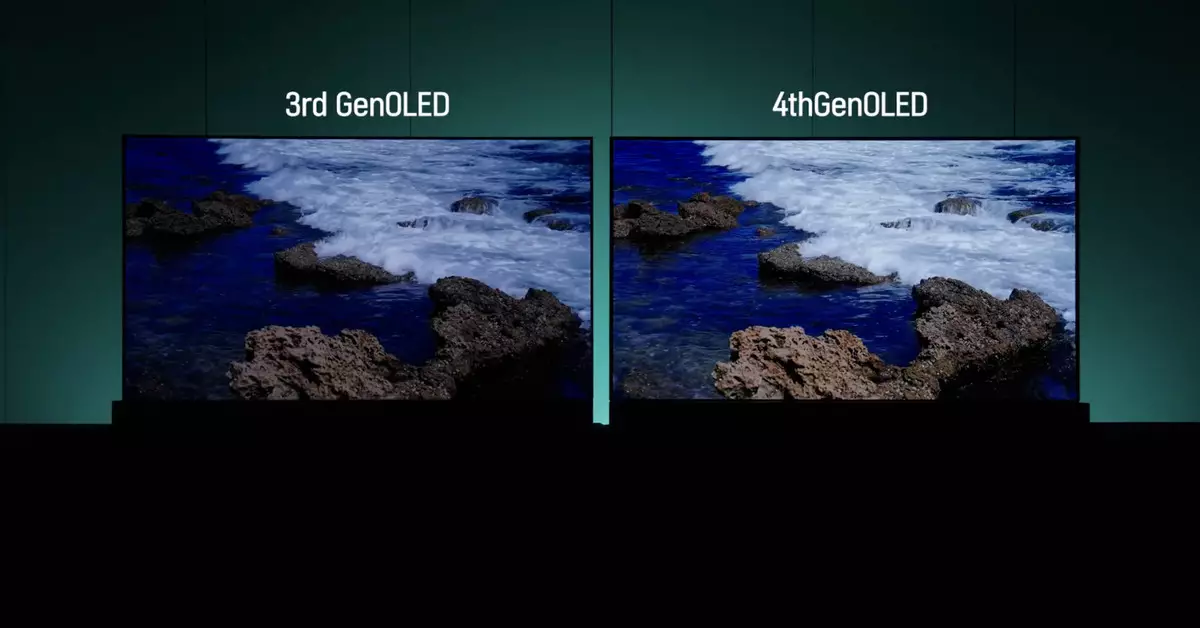The world of television technology is in a constant state of flux, continuously pushing the limits of what we perceive as possible. Leading this charge is LG Display, a titan renowned for its innovations in OLED technology. However, this year’s Consumer Electronics Show (CES) showcased a curious departure from their usual spectacle of cutting-edge displays. Instead, it was Panasonic that took center stage to unveil critical insights about LG’s forthcoming OLED technology. This article delves deeper into LG Display’s new four-layer tandem OLED design, exploring its key features, how it stands out in the current market, and what this means for consumers and the television industry as a whole.
At the heart of LG Display’s new offering is the advanced four-layer tandem OLED technology, a significant evolution over previous models. The company recently disclosed that this innovation yields a brightness increase of 33% compared to earlier iterations, with capabilities of peaking at an astounding 4,000 nits. This leap makes it the first OLED display in history to reach such luminous heights. Such advancements signal a paradigm shift in home entertainment systems, setting the stage for a television landscape increasingly reliant on brightness and color depth as primary selling points.
What sets this technology apart is its Primary RGB Tandem structure. This proprietary design replaces the traditional three-layered system of blue elements, enhancing the light output by introducing additional stacks specifically dedicated to each color component—red, green, and blue. This architecture not only augments brightness but also enhances color accuracy and saturation, thus considerably enriching the viewing experience. In an era where consumers are more discerning about picture quality, LG’s innovations could provide a competitive edge against rival technologies such as Samsung’s new QD-OLED displays.
A significant aspect of LG Display’s new panel is its impact on the viewing experience, particularly in brightly lit environments. In previous OLED displays, brightness limitations often made it challenging to enjoy picture quality under difficult lighting conditions. With LG’s advances, the new panels are poised to maintain rich colors and deep blacks, even in bright rooms. This newfound brightness, while technically impressive, raises questions about its real-world application in consumer products. Manufacturers might not fully exploit the panel’s capabilities in their premium models, yet the advancements signify a broader industry trend toward increasing brightness and dynamic range.
Moreover, alongside increased brightness, the new technology reportedly enhances energy efficiency. LG claims that color brightness has surged to 2,100 nits—an impressive 40% upgrade from prior versions. Such efficiency not only benefits consumers through reduced electricity bills but also aligns with a growing global emphasis on sustainability in electronic devices.
In terms of design, LG continues to favor a traditional glossy surface over Samsung’s glare-resistant finish. This choice prompts a discussion about user experience fundamentals: while glossy screens can enhance vibrancy and color, they also risk unwanted reflections. LG has managed to counteract this potential downside by implementing “ultra-low reflective technology,” providing users with a balance between aesthetic appeal and functional adaptability in various lighting conditions.
As OLED technology battles against competing LCD formats, LG’s pursuit of peak brightness further intensifies the ongoing “brightness wars.” This dynamic landscape invites the anticipation of innovations that could redefine not just the visual experience but also viewer expectations. As consumers continue to seek out premium viewing experiences, LG’s latest improvements ensure that OLED technology remains a front-runner in this competitive arena.
In unearthing the complexities of LG Display’s new four-layer tandem OLED technology, we witness not only the impressive achievements within the realm of display innovation but also the implications these advancements hold for the future of home entertainment. The melding of exceptional brightness with efficiency and vivid color reproduction hints at a new era for consumers who demand high performance from their devices.
While the full impact of these innovations may yet unfold, LG’s unmatched dedication to pushing the boundaries of display technology assures us that the future of television remains an exciting domain, ripe with possibilities. With such remarkable advancements on the horizon, it’s clear that the battle in the home entertainment arena will only heat up further, promising a spectacular array of choices for consumers seeking an unparalleled viewing experience.

